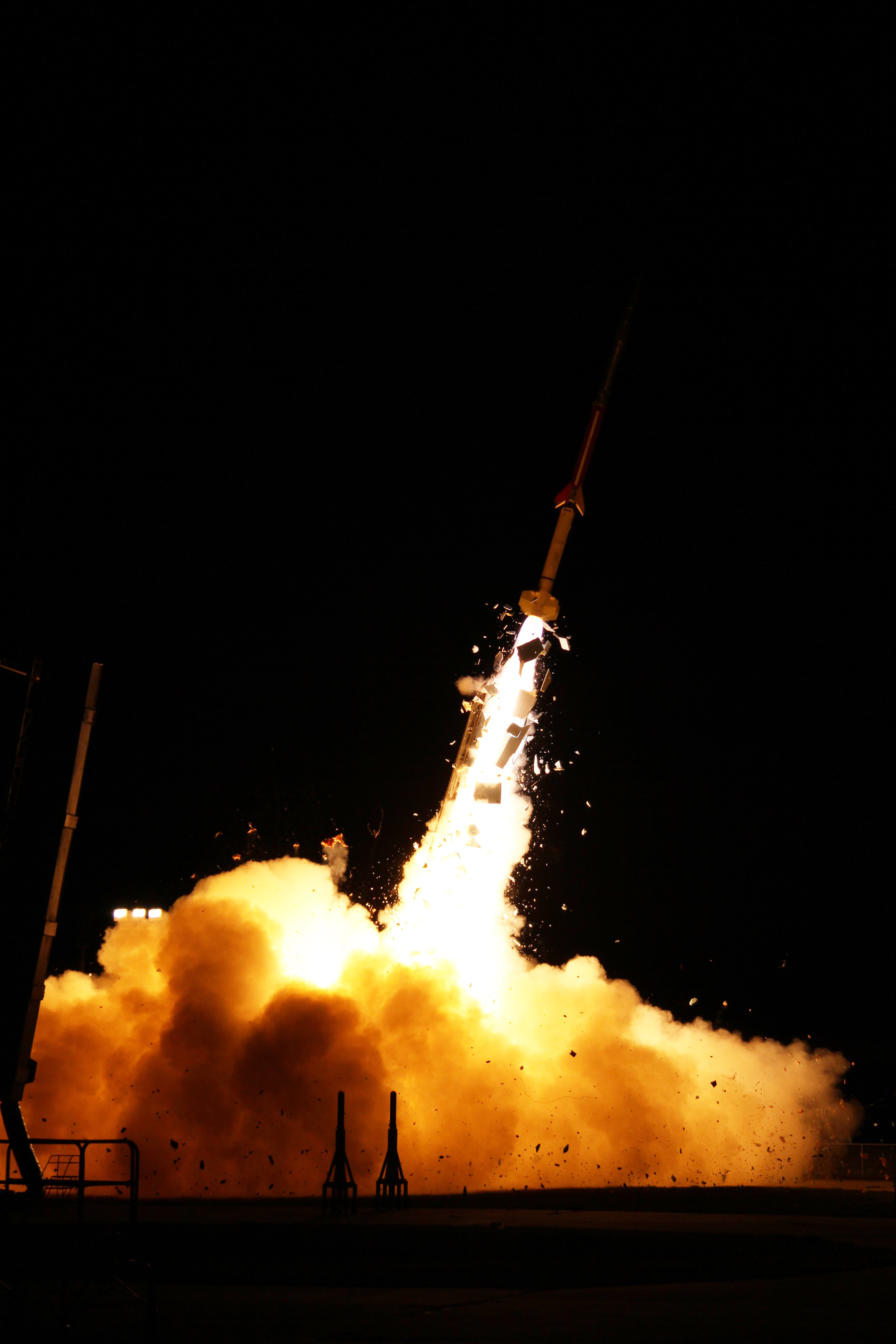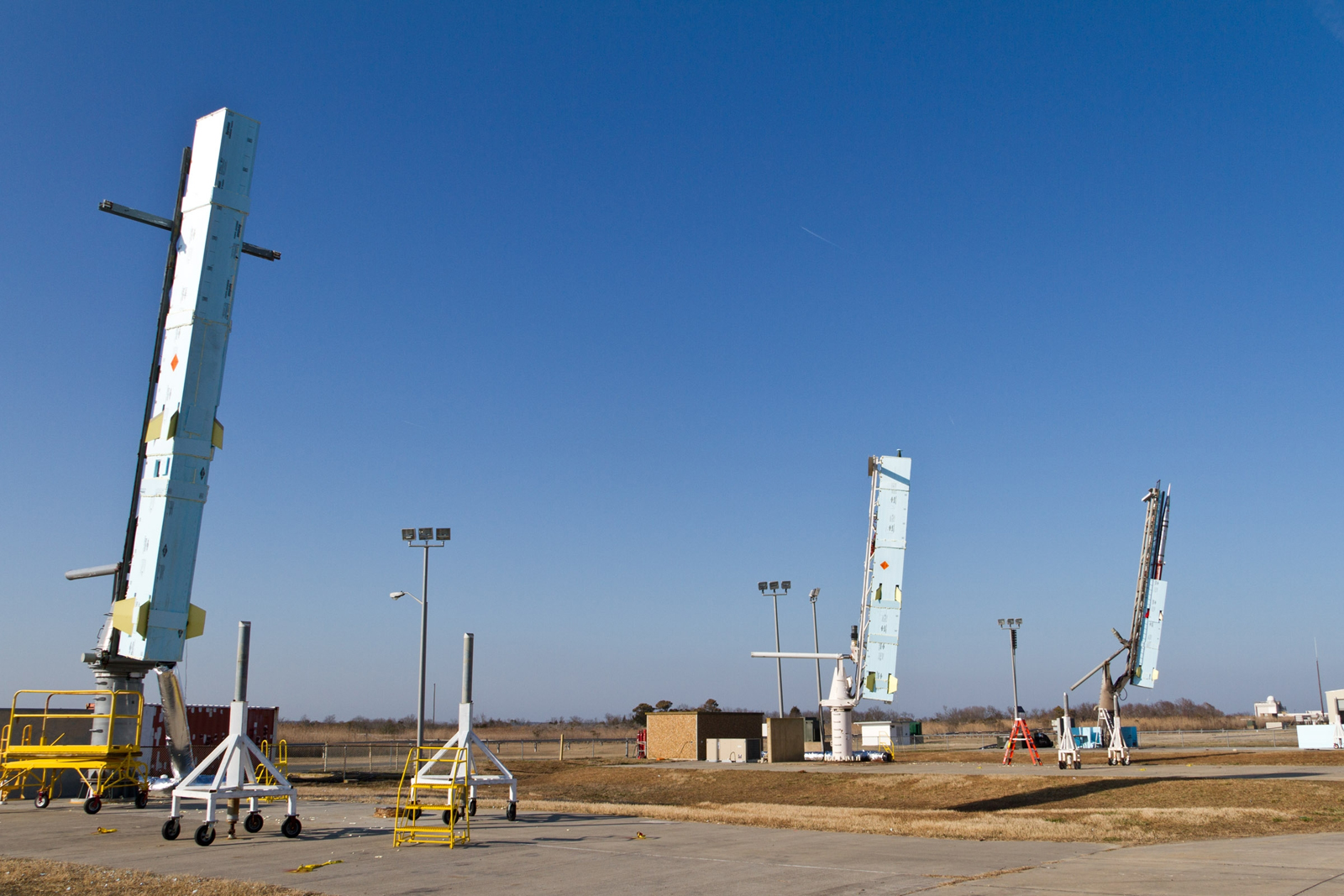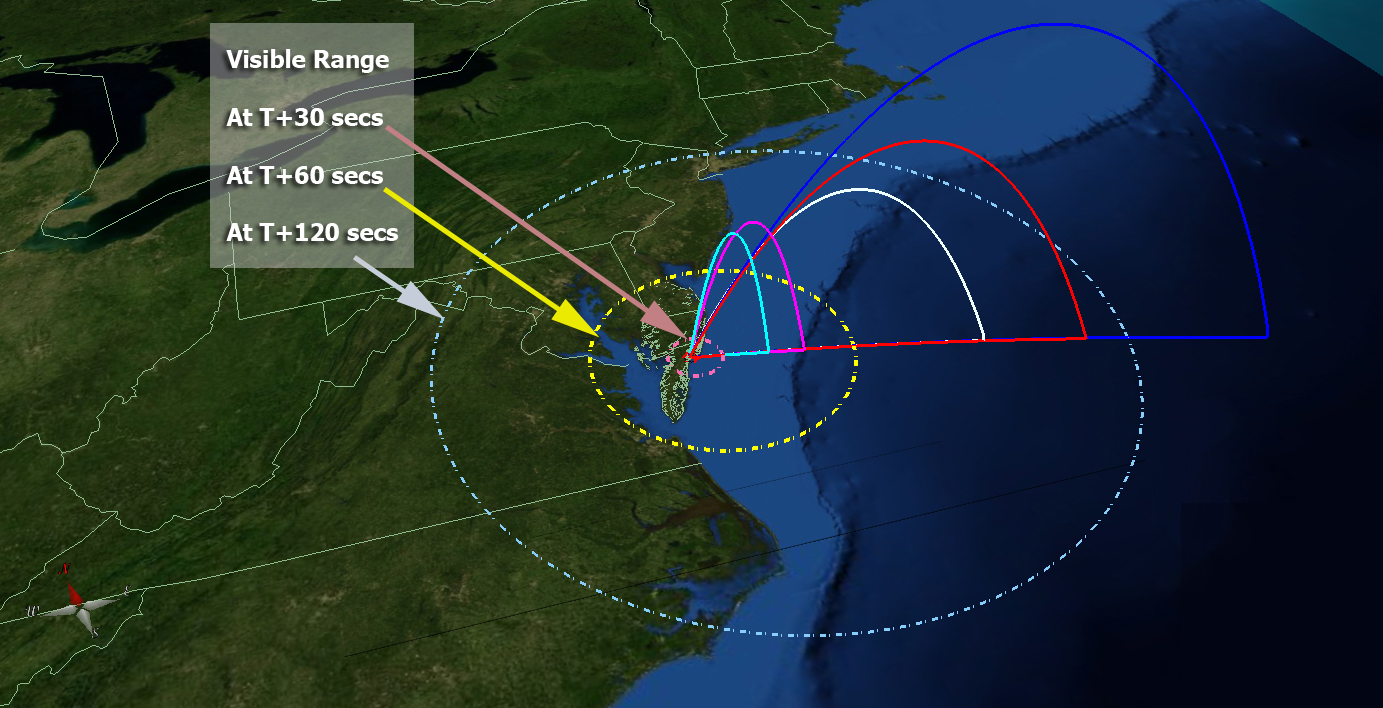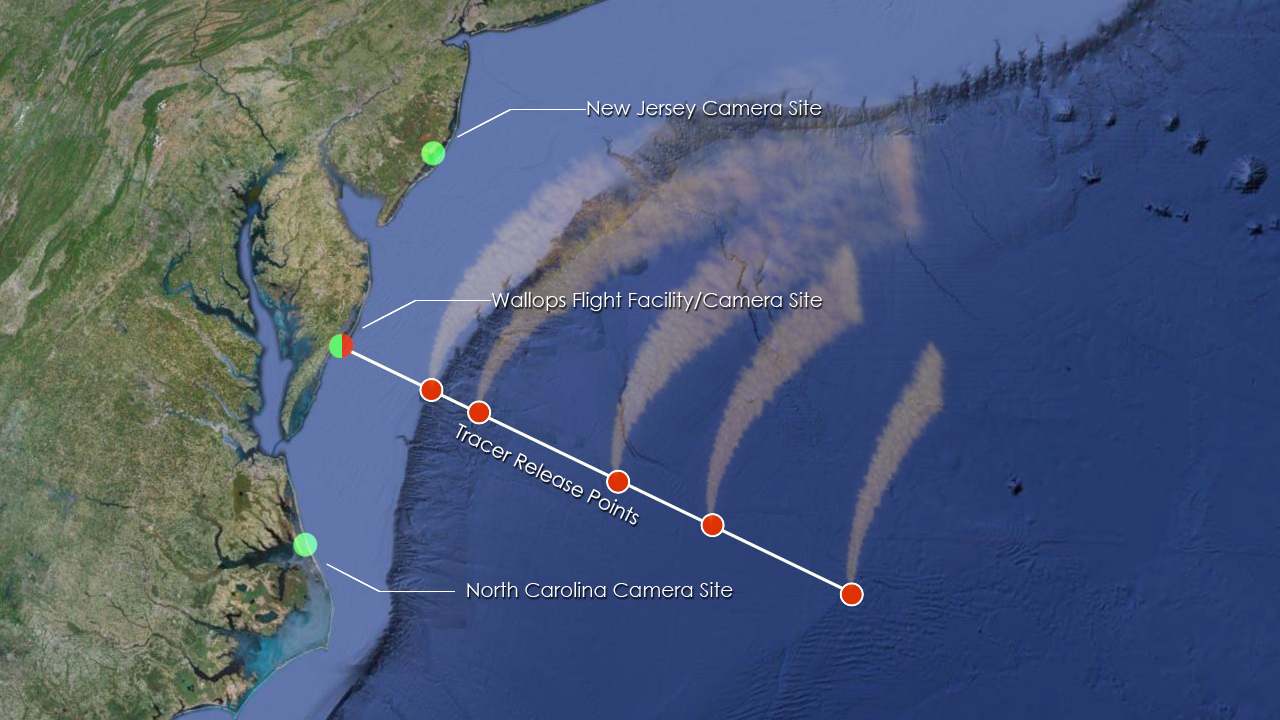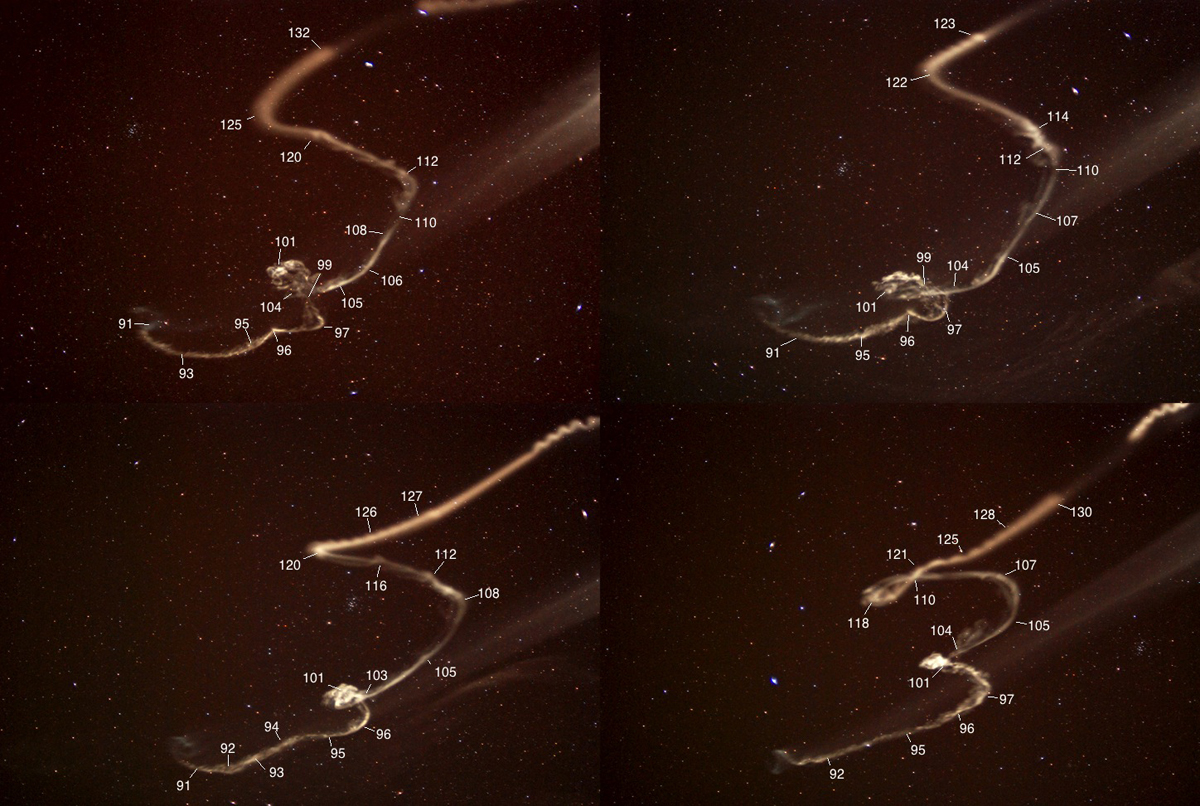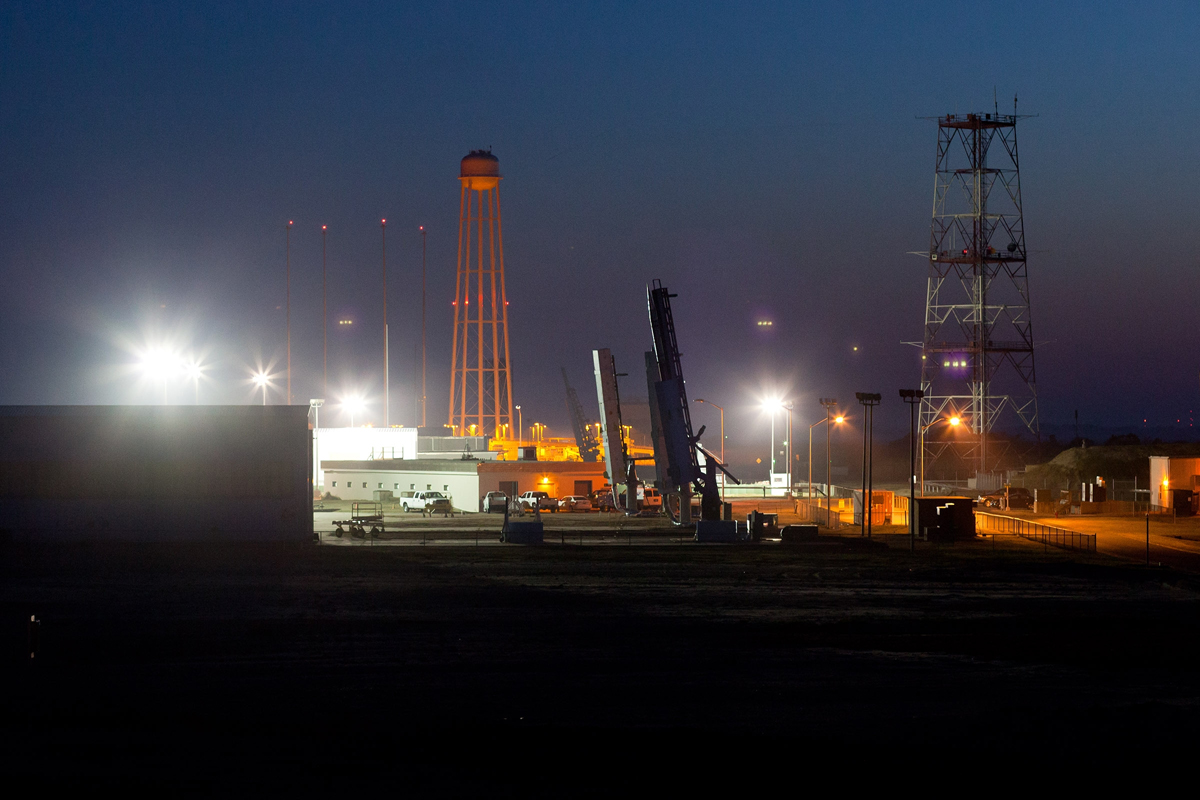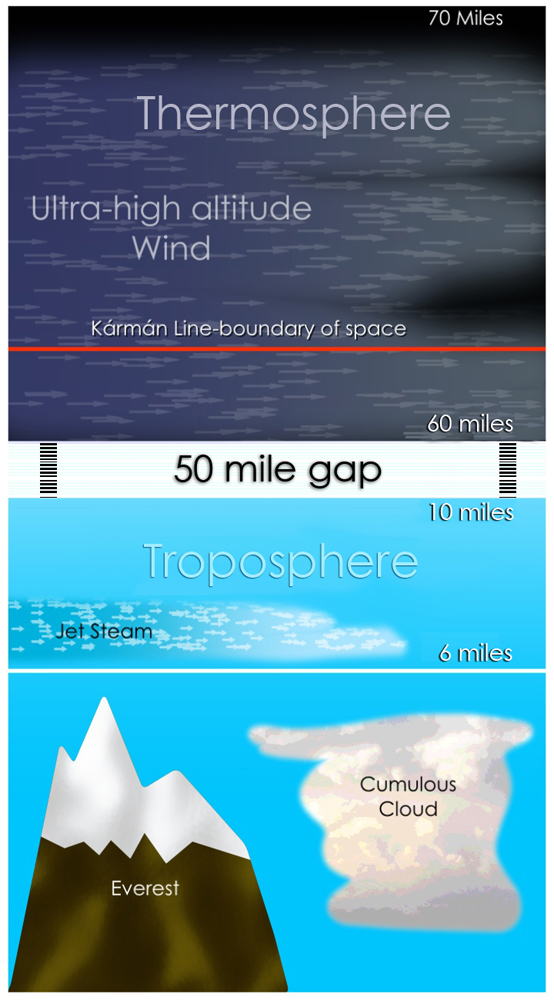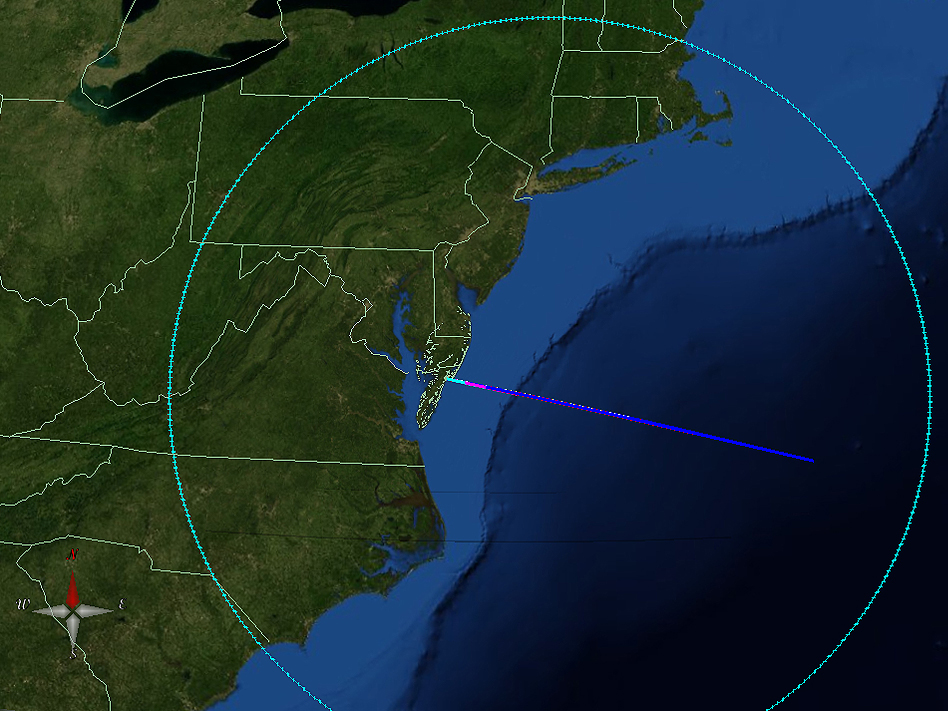ATREX Mission: NASA's Five-Rocket Barrage to Study Winds at Edge of Space
NASA Launches ATREX Rocket: March 27, 2012
One of five sounding rockets launches on March 27, 2012 as part of the ATREX mission from NASA's Wallops Flight Facility on Wallops Island in Virginia to light up the predawn sky with glowing clouds at the edge of space. [Full Story]
Three ATREX Rockets Stand Ready
Three rockets that are part of the five rocket ATREX mission stand in launch position during testing at the Wallops Flight Facility. The rockets are placed in a foam box to maintain the temperature of the solid-fueled rocket motors and the payload. These boxes remain around the rockets until launch. At that point, the rocket rips through the foam as it leaves the launcher. Image released March 16, 2012.
ATREX Terrier-Improved Malemute Rocket on Launch Pad
A Terrier-Improved Malemute sounding rocket stands ready for launch from Pad 1 on the 50K launcher at the Wallops Flight Facility. Two of this type of rocket will be used in the ATREX mission. Image released March 16, 2012.
Flight Profile of NASA's Five ATREX Rockets
This map of the United States' mid-Atlantic region shows the flight profile of NASA's five ATREX rockets, as well as the projected area where they may be visible after launch on March 14, 2012. The rockets' chemical tracers, meanwhile, should be visible from South Carolina through much of New England.
Diagram of ATREX Mission's Glowing Tracer Clouds
The red dots over the water show where the five rockets of NASA's ATREX mission will deploy chemical tracers to watch how super-fast winds move some 60 miles up in the atmosphere. Three cameras at different sites will track the cloud tracers.
Chemical Tracer from a Previous Rocket Launch
Photographs of four trimethyl aluminum (TMA) trails released from rockets flown from Poker Flat, Alaska, in February 2009. TMA is chemiluminescent when exposed to oxygen in the atmosphere and can be seen with the naked eye or tracked with cameras. The trails are initially straight but are distorted by the wind shears and turbulence that occur naturally in the atmosphere.
ATREX Nighttime Rehearsal
Four of the ATREX rockets stand in the vertical launch position during a night-time dress rehearsal at the Wallops Flight Facility on March 15, 2012. Five suborbital rockets will be launched in just over five minutes as part of ATREX.
Breaking space news, the latest updates on rocket launches, skywatching events and more!
Two Jet Streams Diagram
High in the sky, 60 to 65 miles above Earth's surface, winds rush through a little-understood region of Earth's atmosphere at speeds of 200 to 300 miles per hour. First noticed in the 1960s, the winds in this jet stream shouldn't be confused with the lower jet stream located around 30,000 feet, through which passenger jets fly and which is reported in weather forecasts. These two jet streams are 50 miles apart vertically. In March 2012, NASA will launch five rockets in approximately five minutes to study these high-altitude winds and their intimate connection to the complicated electrical current patterns that surround Earth.
ATREX Tracers Visibility Map
This map shows the projected area in which the chemical tracers released by the ATREX rockets may be visible to the public. The clouds formed by the chemical tracers may be visible from the North Carolina/South Carolina border up to southern Vermont and New Hampshire and west to central West Virginia. Viewing is dependent on lighting in the area in which you are viewing, cloud cover and also the trajectory of the rocket.
The Rockets of NASA's ATREX Mission
NASA's ATREX mission will launch five rockets within five minutes to help scientists study the high-altitude jet stream located 60 to 65 miles above the surface of the Earth. The rockets being used for the mission are two Terrier-Improved Orions (left), one Terrier-Oriole (center) and two Terrier-Improved Malemutes (right).

Space.com is the premier source of space exploration, innovation and astronomy news, chronicling (and celebrating) humanity's ongoing expansion across the final frontier. Originally founded in 1999, Space.com is, and always has been, the passion of writers and editors who are space fans and also trained journalists. Our current news team consists of Editor-in-Chief Tariq Malik; Editor Hanneke Weitering, Senior Space Writer Mike Wall; Senior Writer Meghan Bartels; Senior Writer Chelsea Gohd, Senior Writer Tereza Pultarova and Staff Writer Alexander Cox, focusing on e-commerce. Senior Producer Steve Spaleta oversees our space videos, with Diana Whitcroft as our Social Media Editor.
